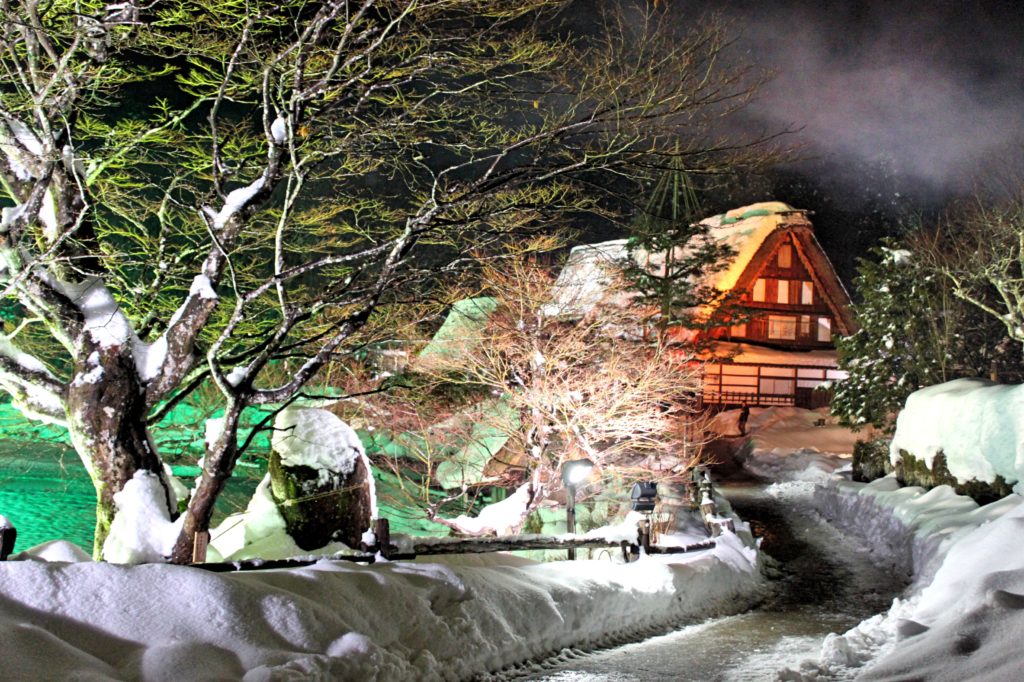Part of the mountainous Hida region of Gifu Prefecture, Takayama is a quaint historical town that thrived during the Edo period timber boom. Famous for the stunning snow-covered facades of its traditional homes in winter, its many sake breweries and delicious Hida beef, Takayama-sometimes known as Hida to distinguish it from other similarly-named towns-is neither gone nor forgotten. Come to Gifu Prefecture, and experience Takayama’s rugged beauty for yourself.
What to See in Hida-Takayama
Hida Folk Village
Hida Folk Village, or Hida no Sato, is the star attraction of Takayama in the wintertime. It can be reached by a short 15-20 minute bus ride from the Nohi Bus Center at Takayama Station. Visit at night when the open air museum’s farmhouses are lit up dramatically, their brightly-colored lights contrasting beautifully with the stark white snow on the roofs of the houses to create a unique atmosphere. You may even be offered some free hot amazake – a sweet sake with filtered rice particles and little to no alcohol content.
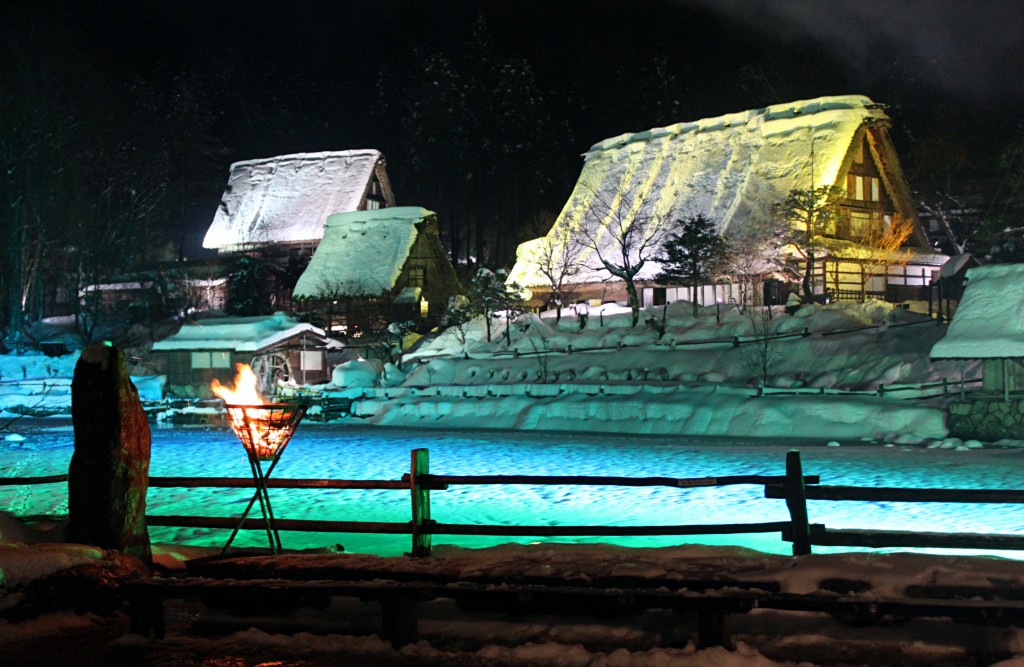
Takayama Jinya
Located in Old Town near Nakabashi Bridge, Takayama Jinya is the former administrative center of the Edo Period shogunate. The building complex was in official use until 1969 but is now set up as a museum with many rooms from living quarters to offices. There is even an “interrogation room” which shows some traditional torture devices – a steep contrast from the refined elegance of the rest of the government complex. The former rice storehouse, the largest in Japan, offers intriguing documents and exhibits on life in the Hida region during the Edo period. English language tours may be available.
Gashhou-Zukkuri (thatched roof) Farmhouses
Having finished your sake, you can feel free to walk around and enjoy the Gashhou-Zukkuri style farmhouses, named after the praying-hands shape (gasshou) that is formed by their steep thatched roofs. The farmhouses are now mini-museums showing a glimpse of rural life in historic Japan. Some of the houses can be entered, but you need to remove your shoes.
Traditional Wood Crafts
In the feudal era, Takayama gained fame for its high quality timer and skilled carpenters. The town was thus put under direct control of the shogun and prospered from this relationship despite its distance from the capitol. Takayama’s carpenters even helped build many of the great temples and palaces of Nara and Kyoto. Takayama is still renowned today for its wooden crafts and carpentry, which are still manufactured throughout shops dotting the town itself.
What to Do in Hida-Takayama
Visit Okuhida Onsen and Ropeway
Okuhida comprises several onsen towns on the far outskirts of Takayama. It is most notable for its tramway, the Shinhotaka Ropeway in Shin-Hotaka. It is the second-largest tramway in the world and traverses more than 800 meters climbing to an altitude of 2,156 meters above sea level. The ropeway is famous for having the only double-decker gondola cars in Japan. The cars offer an excellent view of the surrounding mountainside. First you take a short single-story ropeway from the bus stop to Nabedaira Kogen. The visitor’s center there has restaurants, a gift shop, hiking trails, and even a public bath. Then take the double-decker ropeway to the upper station, boasting an observation deck with 360 degree views of the Okuhida region. There are also hiking trails from here, but they are not recommended in winter due to heavy snow. You can still take a walk around the station to enjoy the pine trees covered in (and sometimes buried in) snow. Then warm up with some lunch and perhaps a dip in the public bath at the lower station, which is connected to Takayama Station by direct hourly buses. The trip takes about 90 minutes and costs 2160 yen to the final stop, Shin-Hotaka Ropeway.
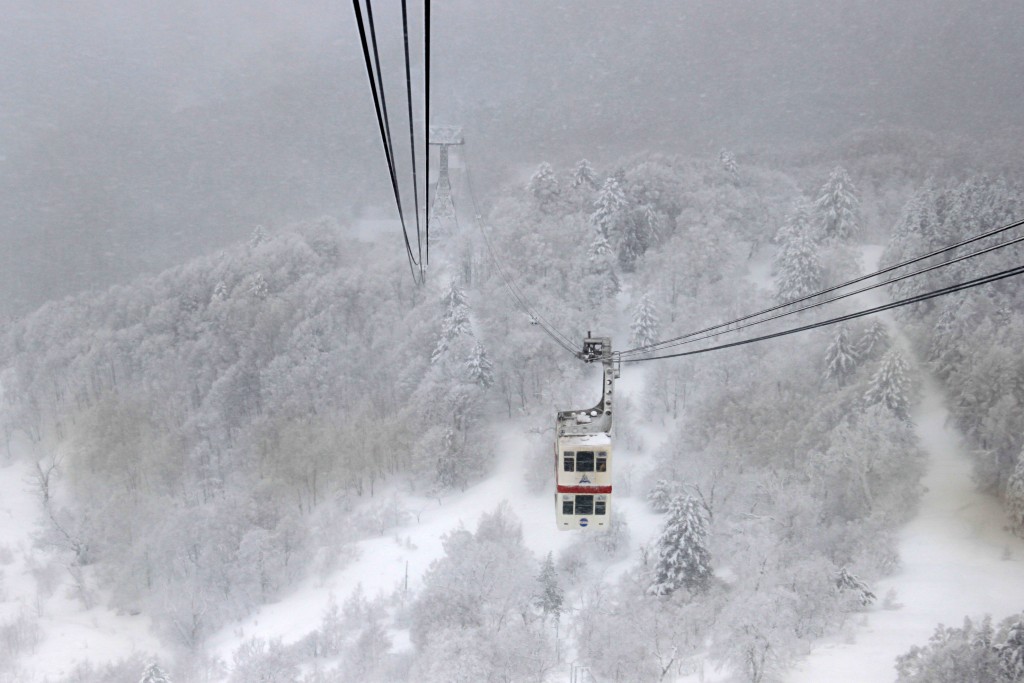
Explore Historical Museums
The old merchant streets of Takayama are filled with traditional wooden Japanese architecture, now a rarity in Japan. As you stroll these avenues, you can imagine yourself transported back in time to the Edo era. Several of the old homes have been opened to the public as museums. Two particularly good examples of these are the Yoshijima House and the next-door Kusakabe House. Yoshijima House is a former sake brewery built in 1909, while Kusakabe House was a wealthy merchant’s home originally built in the mid-19th century and rebuilt in 1879.
Pick up Souvenirs like Shunkei-nuri lacquerware
Takayama’s furniture, each one carved from large pieces of solid wood, is stunningly beautiful but come with a price to match. Still, it is fun to window shop and you can pick up some smaller wood crafts as souvenirs. Takayama’s lacquerware, called shunkei-nuri, is also known for its high quality. Unlike other lacquerware, the lacquer is applied lightly to the wood so that the wood grain is still visible.
Take a Daytrip to Shirakawa-Go
From Takayama, it is easy to take a daytrip to UNESCO World Heritage Site Shirakawa-Go, where many of Hida Folk Village’s Gashhou-Zukkuri-style farmhouses originated. If you enjoyed Hida Village and want to see more traditional farmhouses, Shirakawa-Go is not to be missed; there you can even spend a night in one of the traditional farmhouses. Shirakawa-Go is about an hour by bus from the Nohi Bus Center in Takayama Station. In addition, if visiting between April and November don’t miss journeying through the Alpine Route, especially the Tateyama Mountain Range in Chubu Sangaku National Park. The route combines trains, buses, cable cars, and ropeways. It is famous for its awesome snow corridors – huge walls of snow up to 20 meters tall. In April and June, a portion of the snow corridor around Murodo Mountain is usually open to pedestrians.
Getting to Hida-Takayama
Takayama affords access to Gifu Prefecture or nearby Toyama and Matsumoto Prefectures and is accessible by train from Tokyo and Kyoto via Nagoya Station. It takes about 2 hours and 20 minutes on the JR Hida limited express train. There is one departure an hour, and the route is covered by the JR Pass if using non-Nozomi trains; enter a beautiful white wonderland as the elevation rises. Bring sturdy boots, a warm coat, and thick socks for walking around inside the historical wooden buildings in winter. The town is very accessible on foot except for Hida Folk Village, which can be reached by bus.
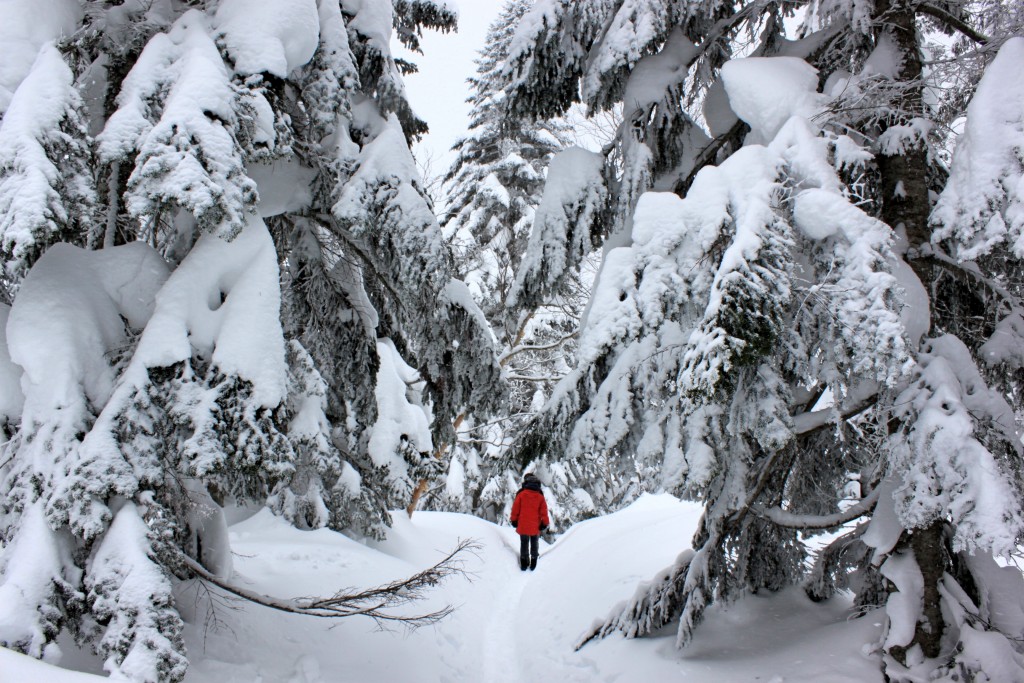
Getting Hida-Takayama WiFi
In large cities such as Tokyo, accessing WiFi is relatively easy-but what about in the remote mountain villages of Gifu? Whether you are hiking around Hida-Takayama’s historic districts, buying lacquerware for that certain special someone, or getting ready to step into the bath at the Okuhida Onsen, you’re going to want to share everything with the people you care about, whenever and wherever you are. That makes choosing a data carrier like Sakura Mobile, the company offering the widest coverage in Japan through its convenient selection of mobile WiFi routers and SIM cards, all the more essential to your journey. As long as you do that, you may feel like you have one foot in Japan’s historic Edo period-but you’ll never be too far from the 21st century.
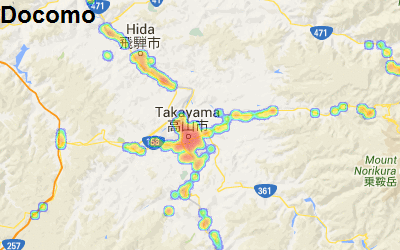
And if you plan to continue your Japanese winter adventures beyond Hida-Takayama, read about one satisfied customer’s solo journey as he offers his suggestions for traveling Japan’s countryside.

